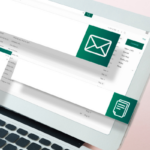How to Leverage AI in Content Writing – Tips & Best Practices
Artificial intelligence is revolutionizing the world as we know it, and the content marketing industry is no exception. With advancements in AI and machine learning, the way we plan, create, and publish content is evolving. AI content writing tools have become so intuitive and smart that distinguishing between AI-generated and human-written paragraphs can be challenging. However, to maximize the benefits of AI writing tools, some human intervention and best practices are essential. This blog will guide you on how to leverage AI in content writing effectively.
What is AI, and How is it Used in Content Writing?
AI in content marketing primarily involves generative pre-trained transformer (GPT) models. These models generate human-like language through deep learning by analyzing large datasets from the web to understand and replicate language patterns. AI content generation tools predict the next logical sequence of words based on the input text.
In content writing, AI can assist with various tasks, including completing sentences, writing sections of blog posts, generating email subject lines and copy, improving and paraphrasing content, and more. Most AI writing tools require an input text, such as an outline or introductory sentence. Advanced tools allow you to define the tone, audience, keywords, and generate multiple content variations, producing results within seconds.
AI tools can also aid in brainstorming ideas, generating SEO content briefs, SEO meta descriptions, social posts for content promotion, and more. These tools are particularly effective at generating short-form content, saving time on content editing and optimization, and even creating custom images and graphics through AI image generators.
How to Use AI Writing Tools for Best Results
To ensure your AI-generated content aligns with your quality standards and brand voice, follow these tips and best practices:
1. Choose the Right AI Writer
Selecting the best AI writer is crucial for achieving optimal results. Consider the following factors:
Ease of Use: The tool should be user-friendly.
Use Cases: Ensure the tool covers your specific content needs.
Output Quality: Assess the accuracy and quality of the generated content.
Customization: The tool should allow you to define tone, audience, and other parameters.
Variations: It should generate multiple content variations in one go.
2. Provide Clear and Descriptive Inputs
When using AI tools, provide clear and detailed prompts. The more specific your input, the better the AI can tailor the output to meet your requirements. Define the tone, target audience, and any relevant keywords to guide the AI.
3. Use AI for Blogs
AI is excellent for creating blog content, but it should not replace human writers entirely. Use AI to assist with:
Generating Outlines, Intros, and Conclusions: Create a framework for your posts.
Paraphrasing and Expanding Sentences: Improve content clarity and depth.
Multiple Variations: Experiment with different versions to find the best fit.
4. Utilize AI for Copywriting & Social Media
AI tools excel at generating short-form content, making them ideal for copywriting and social media:
Website Copy and Product Descriptions: Generate engaging and SEO-friendly content.
Ad Copy and Headlines: Use AI to create catchy and effective promotional material.
Social Media Posts: Quickly generate variations for social promotion by paraphrasing sections of blog posts.
5. Enhance Email Marketing
Automate your email marketing efforts with AI:
Subject Lines and Email Copy: Generate compelling and targeted email content.
Consistency: Maintain a consistent tone across all emails.
Personalization: Use customer data to personalize AI-generated content.
6. Improve Existing Content
Use AI tools to enhance and optimize existing content:
Content Improver: Rewrite underperforming sections to improve structure and flow.
Paraphrasing: Refresh old content to make it more engaging.
Bulleted Lists: Convert lengthy paragraphs into bullet points for better readability and SEO.
Conclusion
AI content writing tools are transforming content creation, making processes faster and more efficient. By selecting the right AI tool and following best practices, you can enhance your content quality, maintain your brand voice, and significantly boost productivity. Remember, while AI can greatly assist in content generation, human oversight is essential to ensure the content is accurate, relevant, and engaging. Embrace AI as a powerful ally in your content marketing strategy and watch your business thrive.













